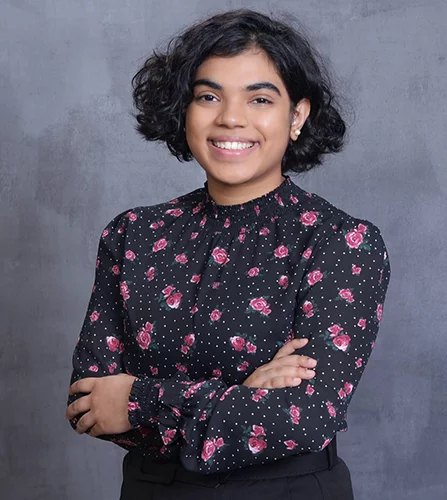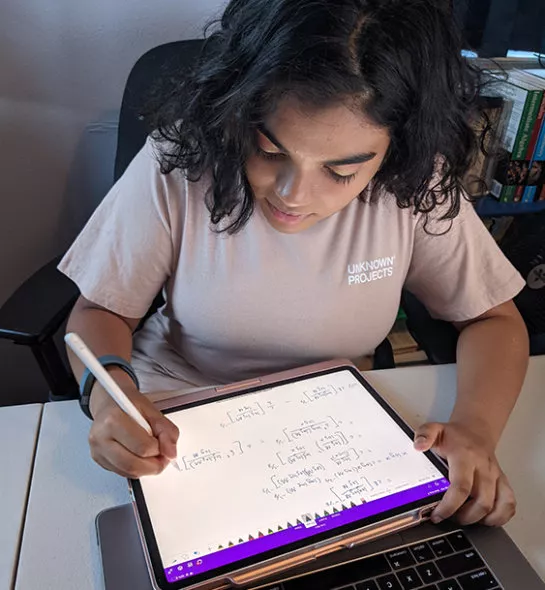Deeper Dive
My project, “Short-Interval Sector Problems for CM Elliptic Curves,” studies prime distribution in short intervals. Specifically, I am looking at the fine-tuned behavior of primes in extremely zoomed-in settings, like the distribution of primes represented by binary quadratic forms. The study of prime distribution has led to some of the greatest problems in all of mathematics, like the Riemann Hypothesis. Despite the hundreds of years of literature surrounding my research problem, there is really no such paper that clearly outlines the relationship between the prime distribution I study, algebraic number theory, and combinatorics, and I wanted to bridge this gap. Hence, I took an interdisciplinary approach to this problem, exploring seemingly disparate areas and the actual close ties between them, such as the relationship between binary quadratic representations of primes and elliptic curves over the rationals, the bond between modular forms and Hecke Grossencharacters, and the combinatorial properties of newforms. In addition to this, I prove a more refined result of previous related work.
As a ninth-grader, I was accepted into a prestigious number theory research program, geared towards high-level undergraduates, where I navigated graduate-level work from a research perspective. My mentor, Dr. Jesse Thorner, and I worked together to find a project that would apply the high-level math I had learned to analyzing and uniquely reformulating a historical problem. Thus, I decided to work on a project studying short-interval CM Sato-Tate distribution. This work was like my baby–it took me 9 months to complete. One of my main difficulties with my project was figuring out how I wanted to present it. I chose to speak through the lens of elliptic curves, but I included a note at the end about how this result can be extended with just a little more work. To me, it was surprising that my main difficulty lay in the introduction of my paper, instead of the more technical, easy-to-trip-up parts of it. I can’t express my gratitude enough to Dr. Thorner, without whom I wouldn’t have had the chance to explore this unique intersection in math to the extent I did in my project. His guidance throughout the process of writing and publishing a mathematical research paper was invaluable, and his advice will no doubt stay with me for my future research.
My project offers a different viewpoint on the distribution of primes in short intervals that makes the advanced ideas used in my proof, which are often rather technical and analytical in nature, more accessible to those in more combinatorial or algebraically flavored fields. It provides a path to a deeper understanding of such analytic number theory results through a new, more approachable lens for people outside this field. My work may also be used to adapt other theorems to similarly different settings, by intertwining such algebra and combinatorics into the standard analysis that goes into proving these results.


